Considering a trip to Kazakhstan? Wondering what to do in Kazakhstan? What are the best places to visit in Kazakhstan? Want to make sure you don’t miss the top things to do in Kazakhstan?
You are in the right place!
If you are asking yourself, is Kazakhstan a good place to visit? The answer is yes! Kazakhstan is a great country to visit.
Despite being little known among even avid travellers, this big country in Central Asia has many great things to do and an interesting culture and history to explore. In fact, one of the great parts about visiting here is that Kazakhstan is not on the main tourist trail. In my opinion, this makes it so much fun to explore and have an amazing trip that exceeds all your expectations. It can feel like a real adventure.
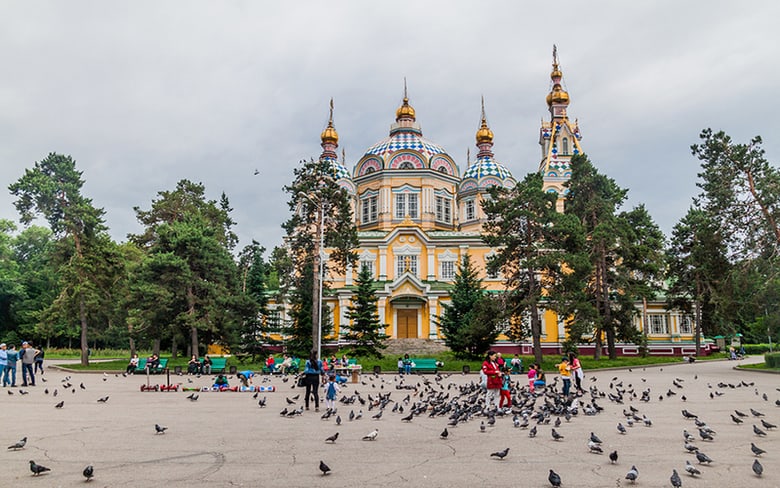
Before planning my first trip here, I had no idea just how many great Kazakhstan places to visit there are and I was very excited as my planning progressed. Finding great resources online is hard though which is why I want to help here! There are some Kazakhstan attractions you won’t want to miss – and I have them here!
Below, you will find my list of the top places to visit Kazakhstan. I hope it will help you feel very excited to visit this amazing destination and your experiences are as positive as mine.
Whether you are interested in the top Kazakhstan tourist places or getting away from it all at the most beautiful places in Kazakhstan, we cover it all in the best things to see in Kazakhstan below!
Contents
Top 11 Best Things To Do In Kazakhstan
1. Explore The Futuristic Capital, Nur-Sultan
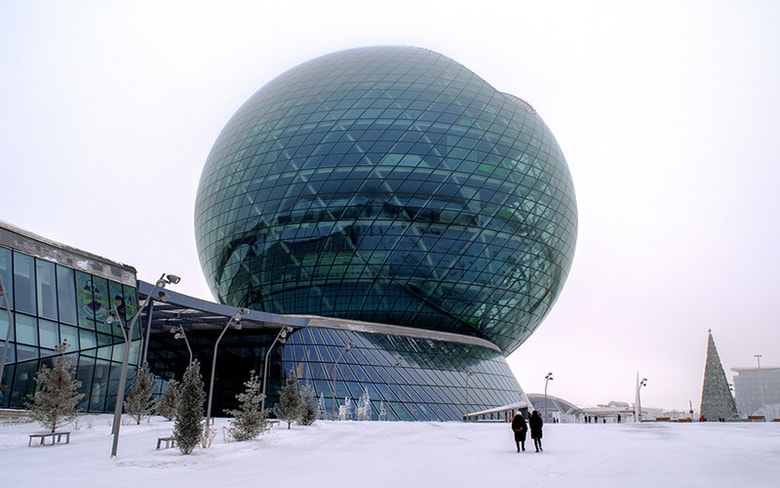
Welcome to Nur-Sultan, Kazakhstan’s new capital that has risen from the northern steppe like a glimmering sculpture garden. Previously known as Astana, in 2019 the city was renamed Nur-Sultan after the former president. A showpiece for the 21st-century, the Kazakh city’s skyline grows by the year, with plans scheduled for expansion through to 2030 when it will be home to over a million people.
Landmark buildings spring up faster than we can keep track of. Designed by leading international architects in all manner of styles – Asian, Western and Soviet – along with the odd futuristic design. It’s not hard to see why the city is often referred to as the “Singapore of the steppe”. Wide open boulevards, international shops, English signage and a young, forward-thinking vibe, the city is full of interesting Kazakhstan tourist attractions.
Start your city exploration at the very centre at the Bayterek Tower, the most famous attraction in Nur-Sultan. Soaring high, the monument is shaped like an oversized vase, with a sphere at its very tip. Not only a beautiful building, it also holds important meaning for the culture and history of the Kazakh people, with the tower said to resemble a mythological tree and a large golden egg from the magical bird of life, Samruk. Discover more about this nomad fable at the on-site museum or visit the observation deck for splendid city views.
Next stop is at The Palace of Peace and Reconciliation, nicknamed The Pyramid. Representing humanity and religious equality, it was built in 2006 on behalf of the Congress of Leaders of World and Traditional Religions. Representing Buddhism, Hinduism, Judaism, Islam, Christianity and more, try to catch a show in their 1500-seat auditorium or take the 30-minute tour, keeping an eye out for the gorgeous stained glass doves.
Spend the afternoon at the National Museum of Kazakhstan, the newest and largest museum in Central Asia. The building itself embodies the city’s futuristic design with large blue glass windows and a white marble interior. There’s a lot to discover here as the museum covers the history and culture of Kazakhstan – from ancient to modern times – through nomadic eras, Russian domination and independence.
In the evening drop by the Astana Opera, on the left bank of the Ishim River. Opened in 2013, this vast complex is the third largest opera in the world and is inspired by Italian theaters of the 19th century mixed with elements of national heritage. Home to more than opera, you can also catch a ballet or orchestra performance.
A second day of exploring the city, and there’s nowhere better to start than at the Hazret Sultan Mosque, a highly regarded and beautiful place in Kazakhstan. Recently built in 2012, the mosque is often noted as one of the most beautiful buildings in Nur-Sultan. Resembling a large palace, it can hold up to 10,000 people. Don’t miss a stop here to see the outstanding architecture.

Other sights worth a visit include the Kazak Yeli Monument – 91-metres high and topped by a golden eagle – it’s intended to symbolise the historic destiny of Kazakhstan’s people. And, in a yurt-shaped building, The Museum of the Armed Forces. This splendid museum showcases exhibitions on weaponry and warfare, beautifully presented with chainmail armour, swords and heroic statues. Check out their Hall of Ancestry with it’s interesting look at weapons through the ages and the cavalry tactics of Turkic, Mongol and Kazakh armies. War historians will find this at the top of their list of “Kazakhstan best places to visit”.
For those interested in renewable energy, drop by the Museum of Future Energy, The Nur Alem. This eight-story building was designed by prominent American architects to represent Kazakhstan at the International Specialised Exhibition EXPO 2017. Following the exhibition, the pavilion was transformed into the country’s first technological museum that focuses on ideas for the world’s future energy sources. Each floor of the museum represents a different type of renewable energy – ie. wind, sun, water, etc.
End your day at the Khan Shatyr – an enormous tent-like shopping mall and perhaps one of Nur-Sultan’s most extraordinary buildings. Boasting a variety of designer stores, entertainment, and arcades with a drop tower, flume ride and 500m-long monorail, it will keep you busy for hours. Also, don’t forget to check out the climate-controlled Sky Beach Club waterpark with a real beach on the top floor!
Not in the mood for shopping? Hit the city park at the south side of the Ishim River. You’ll find the Atameken, a 200 metre walk-around country map with models of major buildings – children find this one of the best places in Kazakhstan. Also nearby is another treat for families, the Duman Recreational Complex. This amusement centre houses an oceanarium holding over 2000 creatures from the world’s oceans and an exciting shark tunnel.
We also recommend you visit the Nur-Sultan Circus – the building itself deserves to be visited, designed as a giant UFO spaceship that is brilliantly lit up at night. Inside, the Circus arena is equipped with modern mechanisms that allow the stage area to magically change. The award-winning international troupe of more than 300 put on a stunning show, including clowns, acrobats, trapeze acts, gymnastics, illusions, plus horse-riding and ice skating exhibitions.
One of the best places to go in Kazakhstan is to the Korgalzhyn Nature Reserve – included in the UNESCO World Heritage list. The largest reserve in Kazakhstan, at over half million hectares, it’s only 30km south-west of the city. Visit towards the end of July or in August as its nesting time for birds – pink flamingos, pelicans and more – or in early May to catch dramatic tulip fields. Start at the onsite Birds Paradise centre, then on to eco-routes for park tours. You can drive an old Soviet off-road jeep (provided by the Reserve), or join an organised group day-tour from Nur-Sultan. Don’t forget binoculars as you’ll be observing from some distance.
Reach the city by flying into Nursultan Nazarbayev International Airport or connect on the A17 Highway from Tashkent.
We suggest staying at the Ritz Carlton, Astana.
2. Hang Out In Almaty

This former capital is still the largest city in Kazakhstan, set in the foothills of the Trans-lli Alatau mountains in the extreme southeast. A bustling city, it’s remained the country’s centre of commerce, home to the largest stock exchange in Central Asia and all the main banks.
Almaty means “City of Apple Trees” and a traditional story links the taking of the apple from the tree in the old testament to Almaty. Whether or not close to the Garden of Eden, the city is certainly breathtaking, with the constant backdrop of the mountains against the city’s tall buildings and close to many places of interest in Kazakhstan.
Republic Square is a great starting point for discovering the history of Almaty and the world’s ninth largest country, Kazakhstan. This large Square is home to the Akimat House of Almaty, the official Government building, and also the Monument of Independence, both interesting places in Kazakhstan.
Nearby you’ll find the Central Mosque, a truly magnificent building constructed in the Timurid style of architecture, and also the equally splendid Russian Orthodox church, St Nicholas Cathedral. Visit the Central State Museum with its comprehensive history of Kazakhstan display, and the State Museum of Arts of the Republic of Kazakhstan to appreciate works of art from around the world.
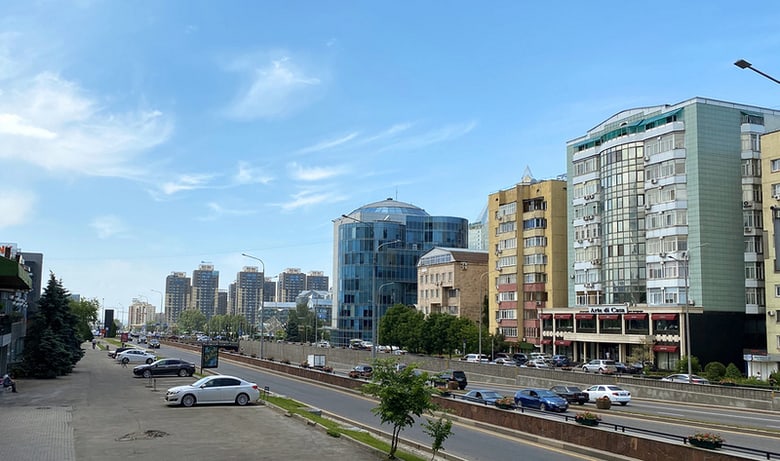
We hear mixed reports about Almaty Zoo, home to a collection of unique Kazakhstan wildlife, thus you might choose to skip a visit here. Instead, have some fun at the Interactive-Entertainment Park EVRIKUM, where you can explore the world of rocket science. Families participate in science, physics and gravity experiments. Another favourite for children is the Kazakh State Circus, combining horsemen and acrobatics in stunning displays, along with clowns, trapeze artists, tumblers and more!
You’re bound to notice the dominating TV mast that stands out like a huge minaret on top of the highest point of the city – The Kok-Tobe Park. Located at the top of the mountain of the same name, this is a regular tourist stop. From downtown Almaty take a cable car up to the mountain, and enjoy the amusement park attractions – including ferris wheel and roller coaster – petting zoo, ponds, and restaurant.
Spend an hour at the Zelioni Bazaar, one of the most famous local markets and then head to Panfilov Park. Here, you’ll find one of the stranger tourist attractions of Kazakhstan, the Museum of Kazakh Musical Instruments. A high-tech and interactive look at local folk music instruments, it’s definitely worth a visit. Also inside the park, check out Zenkov Cathedral, possibly the world’s only wooden cathedral. Another popular park very nearby is Central Park (Gorky Park), with amusements for the young at heart.
Many visitors use Almaty as a base to explore the country’s wild southern landscapes. Head to the Ile-Alatau National Park – a spectacularly diverse natural area with 300 species of animals and birds, including the famed snow-leopard, Central-Asian lynx and Tian-Shan brown bear, set in woodlands, alpine meadows, glaciers and lakes, including the Big Almaty Lake, a stunningly turquoise reservoir set at 2500 metres. All possible to visit by bus or car, in any season, on day trips from Almaty.
Reach the city by flying into Almaty International Airport, 25 km outside of the city. From Nur-Sultan travel 14 hours by train.
We suggest staying at the Rixos Almaty Hotel.
3. Go Skiing At Shymbulak
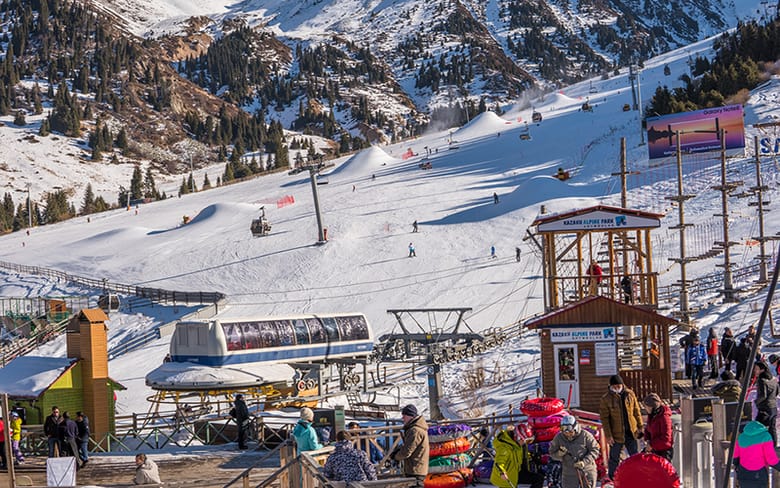
A cheap alternative to European ski destinations and at the forefront of tourist places in Kazakhstan, Shymbulak is Central Asia’s largest ski resort. Only 25km from Almaty, it offers diverse slopes for all levels, whether skiing or snowboarding. Located in a picturesque valley of the Ile-Alatau Mountains at an altitude of 2510 metres, the resort is noted for its mild climate, sunny wintery days and constant snow levels.
As the mountains are fairly high there’s a long ski season, from early December until late March. Lift passes can be purchased from the Cable Car Station, with a selection of options based on age, family and the number of lifts you plan on using.
For a roundtrip – from the bottom of the mountain to the base of the ski resort and up to the top of the mountain at 3200 metres – you’ll need to purchase a combi-pass covering three cable car rides (including the 1 ride back down). The lifts usually open at 10am until 6pm on weekdays, sometimes with an hour’s extension for the weekends. Night skiing is available on sporadic days, with lifts open until midnight. Check locally for the latest information.
Skiing and snowboarding lessons are available, with English-speaking instructors. Group and private classes, with prices dependent on your length of package.
With over 20km of slopes you’ll find a good split of courses – approx. 4km for beginners, 10km for intermediate level skiers and snowboarders, and 6km for advanced skiers. There’s a half-pipe for snowboarders and extreme bends for the pros, and most years a special mogul track.
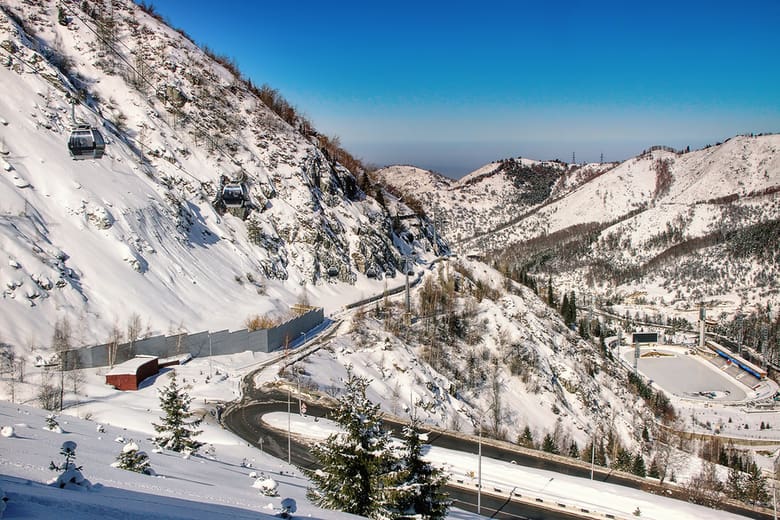
Also, don’t forget to check out the off-piste skiing around the Shymbulak area – but best to have a guide with you for this. And head to the yurt bar at the Talgar Pass, the highest point of the ski resort, for a fabulous lunch time stopover.
Most people choose to stay in Almaty and drive in 30 mins to reach the slopes or take the bus towards Medeu and jump off one stop earlier at the Cable Car Station. However, if you’re a fan of fresh mountain air you’ll find accommodation options at the first cable car level, around 2260 metres. Luxury and budget hotels, and cheap hostels are available, along with fancy restaurants, ski and snowboarding schools and a handful of bars.
Not in the mood for skiing? This winter wonderland has some great day hikes – namely the Four Peaks Trail, taking you across four mountain peaks, approximately 11km and usually completed in 7-8 hours.
Starting at Medeu, the trail winds uphill to 3000 metres at Peak Furmanov. You can choose to turn back at this point, or continue along past Peak Panorama and Peak Bashuta, ending at Peak Shymbulak at 3450 metres. Return by taking the ski lifts and cable car down to the bus station.
A more leisurely hike is to Butakovskiy Waterfalls, starting at the same point as the Four Peaks Trail. Refer to the map at the start of the trail, and don’t forget that it’s winter so the sun drops early.
Needless to say, if you’re visiting in summer there are numerous splendid hikes. Take the cable car up for alpine walks along high mountain trails.
Still have energy? Head to Medeu for the world’s highest ice-skating rink. Built in 1949, it was one of the top speed skating venues during the Soviet era. 10,500 sqm of ice, at 1691 metres above sea level, it’s great fun!
Stay in Almaty or at the Shymbulak Resort Hotel.
4. View Glaciers In Tian-Shan
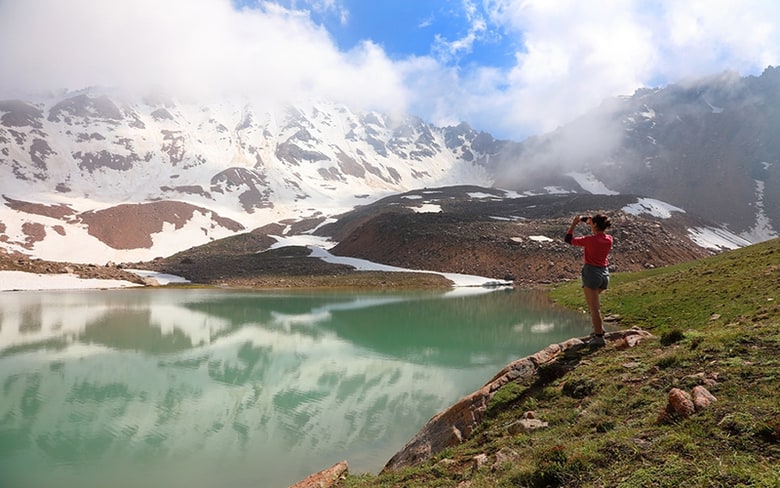
The Tian Shan mountains cover a massive 2500km, spanning across Kazakhstan, Kyrgyzstan, Uzbekistan, Turkmenistan and China. Known as Tengri Tagh – Mountains of Heaven – in Kazakhstan, the mountain range is a mixture of lakes, gorges and valleys with stunning panoramic scenery, flora and fauna, local nomads and more.
There are 370 glaciers in the central part of the Northern Tian Shan and hiking to these are one of the top activities in Kazakhstan.
The easiest to reach within a day is from Almaty, the 4-km long Touyuk-Su Glacier, located in the upper part of Maloalmatinsky gorge. To reach here, take a bus from Almaty up to the Shymbulak Ski Resort by cable car. From the top of the cable car, it’s a 3.5 hours trek along the Touyuk-Su gorge passing Molodezhny Glacier (3500m) to Touyuk-Su Glacier (3600m). Surrounded by snowy 4000 metre mountain peaks it’s a magical place.

On average the hike can be completed within a roundtrip of 6 hours and is thus possible as a long day trip from Almaty. Available all year round, if you wish to spend longer to discover other nearby glaciers, look at booking accommodation at Shymbulak, where you’ll find a mixture of hotels and hostels.
In total there are 12 glaciers in the upper reaches of the Small Almaty River, with the central and main Touyuk-Su Glacier being a valley type surrounded by fan-shaped smaller ones located only on the northern slopes. Popular day hikes – all possible from Almaty – include to the Bogdanovich Glacier (3600m) offering views of hanging glaciers Til and Ayak, or to the Manshouk Mametova Glacier (3550m) which slides down in the form of a fantastic solid waterfall.
Stay in Almaty or at the Shymbulak Resort Hotel.
5. Trek At The Kolsai Lakes
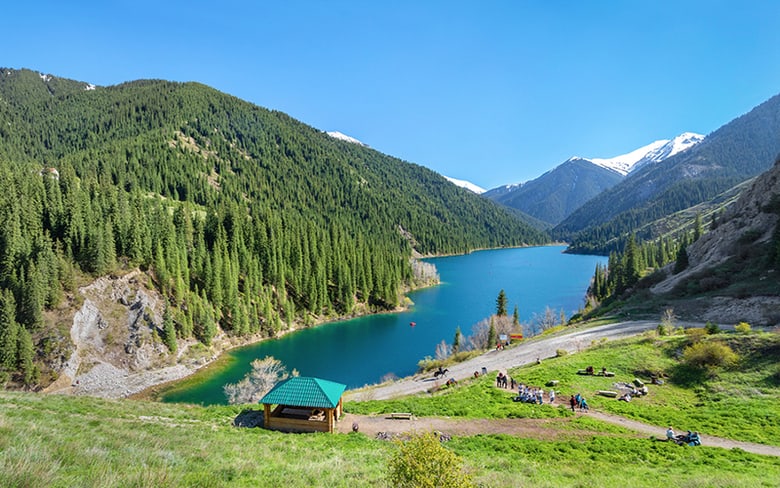
Kazakhstan beautiful places don’t come much grander than this! Kolsai National Park is perhaps the ultimate haven for nature lovers, with the trek to the Kolsai Lakes usually a winner in top-10 most beautiful places in Kazakhstan lists.
Wild strawberries, dancing flowers and spectacular sapphire lakes are the prize for anyone who makes the arduous journey to the Kolsai Lakes region. Breathe in the healthy mountain air, slosh through muddy trails, hike through alpine forests and learn about the simple life in the Kazakh countryside.
Kolsai Lakes is a series of three glacial lakes in the Tian Shan Mountain Range. The first being reachable by taxi from the nearby village of Saty, and from there you can trek or horse ride to Kolsai 2 (8km) and Kolsai 3 (5km). Choose to hike to the first two lakes within a day – staying overnight in Saty at a homestay – or trek to all three across a multi-night stay camping or sleeping in yurt camps.

Horses are available at Kolsai 1 which can also take you around all three lakes in the same day. Alternatively, an ideal option for riders with basic horse-riding skills, is a 4-day trek. Offered from May to October, the route takes you to all three lakes, unexplored remote places, quiet local villages, and overnights at rustic mountain huts with breathtaking views of the snowy peaks of Kungey-Alatau.
Try to also include a visit to Lake Kaindy, another bright turquoise lake famed for the forest that seems to rise out from its cold waters. Formed in the early 20th century after the damming of the Kaindy River, water levels in Lake Kaindy have slowly risen. These days, the water almost covers the forest of schrenk spruce trees in the valley, which now poke out from the lake in eerie fashion, resembling masts of sunken ships.
You’ll need a 4WD to reach the lake, and from the car park it’s a steep ten minutes hike. Of course, if you have a few days you can combine both hikes and see all four lakes.
The Kolsai Lakes are approximately 300kms from Almaty, and Lake Kaindy another 36km south. Reaching the area by public transport can be tricky and we recommend taking a shared taxi from Almaty or, ideally, rent a 4WD in Almaty and self-drive. Private and group tours can also be arranged from Almaty.
A minimal fee is charged for entering Kolsai Lakes and secondly for Lake Kaindy, with additional costs for camping. Campfires are allowed next to the lakes to help get through the chilly nights, but do go prepared for the weather. Visit between June and September for ideal conditions or mid-late May and late September to miss crowds but expect some snow. Yurts and homestays are closed at Kolsai from October to early May, with trails covered in snow and the lakes mostly frozen over.
6. Explore Charyn Canyon
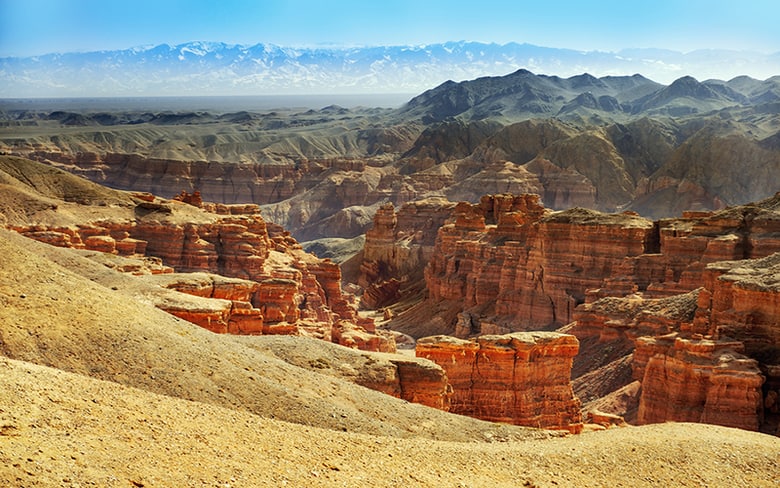
If you’re staying in Almaty you also shouldn’t miss a visit to the Charyn Canyon (Valley of the Castles), one of the most famous places in Kazakhstan. Definitely one of the more popular attractions in the region, it’s best to avoid the busier weekends when locals descend for an overnight stay.
Known as the Mini Grand Canyon, the Charyn Canyon appears as if from nowhere amongst the almost monotonously desolate rolling steppe. Suddenly, the deep amber crack appears, carved through the heart of the Kazakh desert.
The history of the Charyn Canyon stretches back 12 million years, when the river started to slowly erode the surrounding stone. Older, darkest layers at the base of the canyon are volcanic lava rocks, on top of which debris has slowly accumulated to form natural sculptures.
Lizards, snakes, steppe hares, foxes and groundhogs thrive here. Endemic fish, the naked Osman, swim in the cold fast-flowing waters of the Charyn river.
The walk to the river is approximately 4km (about an hour) from the entrance. Pay the minimal entrance fee and elect to follow the steep path downwards to experience the canyon from below or walk along the rim for stunning gorge views.
An eco-park sits beside the river, with yurts and wooden bungalows available for an awesome night’s stay, allowing you to explore longer and away from the daytime crowds. Here you’ll find a small restaurant selling Kazakh basics or bring your own picnic.

We highly recommend staying overnight as at both dawn and dusk sun rays dart around the canyon, turning the cliffs magical golds and ambers. You will not regret it.
Up for a real adventure? Equipped with your own 4WD or if you’re a keen hiker, set off to discover the other three rarely-explored canyons in the area. Along the way look out for companies offering rafting on the Charyn River.
Termirlik Canyon is of the reddest iron red and children tend to love this canyon, playing on the towers and overhangs. Set up camp here and enjoy a cozy fire, whilst waiting for the awesome night sky. No tent? Head to nearby Chundzha offering a number of guest houses built around hot springs.
Yellow or Moon Canyon – Uzunbulak Canyon – is another cozy canyon with a great picnic spot beside the river. You’ll find more nature here in bright steppe colours.
Lastly, Bestamak Canyon is over 6km and has wide u-shaped valleys mixed with narrow passages. Constantly changing, this canyon throws off pink and orange glows as you walk the dry riverbed.
To ensure you really experience the beauty of the area we recommend making this a minimum 2-day visit. The Kazakh steppe is freezing (down to -30) in winter and sizzling (up to +40) in summer, so dress appropriately and ensure to hydrate in summer! Take snacks, water, sun hats and lotion, and warmer clothes for the evening.
Day tours are available from Almaty, but be prepared for the 4-hour drive in and out. Alternatively, rent a 4WD and explore more canyons freely. Extend your stay by connecting through to Saty (1h30m) and trek to the Kolsai Lakes.
7. Visit Kazakhstan’s Holiest Site In Turkestan

The Mausoleum of Khoja Ahmed Yesevi can be found in the north-eastern part of the modern-day town of Turkestan. Once an ancient centre of caravan trade, and named Khazret, it is located in the southern part of Kazakhstan.
The mausoleum was commissioned in 1389 by Timur, who ruled the area as part of the expansive Timurid Empire. However, with his death in 1405, construction was halted. Though it was never completed the building has survived centuries and is one of the best-preserved Timurid constructions.
Innovative architectural ideas for the vault and dome and unique ornamentations using glazed tiles – showing Iranian influences – made the mausoleum a prototype which spread across the empire culminating in the famous monuments of Samarkand.
Including the central hall, there are 36 rooms in the Mausoleum, covered by what is still the largest existing brick dome in Central Asia at 18 meters in diameter and towering up to 44 metres. A monumental building.
Inside, discover the huge ritual bowl that weighs over two tons and the bronze lamp which was a gift from Tamerlane. You’ll discover the Grand Palace, with the khan’s throne and scepter, and the Small Palace with the pantheon of 43 tombstones of the Qazaq khans. Also explore Hoja Akhmed Yassaui’s tomb and the Small Mosque – the main prayer area – along with many ancillary rooms.
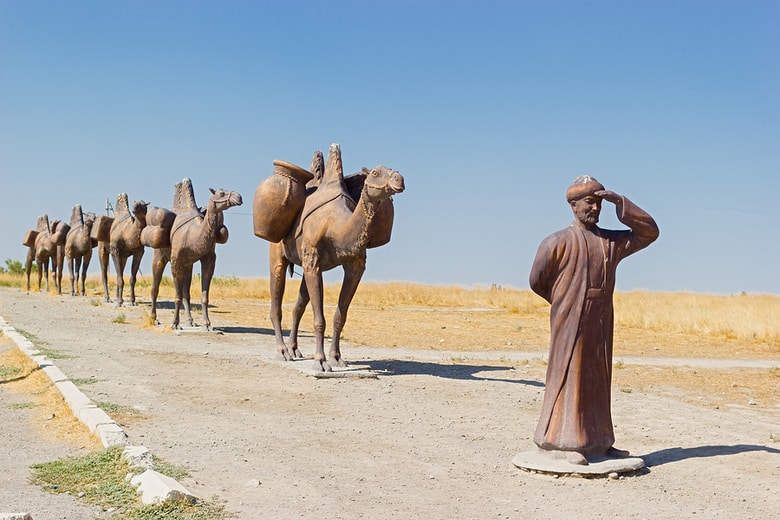
Next, explore the underground mosque – Hilvet – of the Mausoleum, considered a sacred Sufi underground structure. Located 150 metres from the Mausoleum, the Hilvet was home to the followers of the Yassaui school who for more than five centuries conducted their ritual ceremonies here. A semi-underground extensive structure with prayer rooms, sleeping rooms for pilgrims and rooms for ritual ceremonies, now only a small part of the original structure has remained intact.
Pilgrims from across Central Asia continue to visit these attractions in Kazakhstan, paying their respects. The buildings have come to embody the Kazakh national identity and were protected by UNESCO in 2003 as possibly the top historical places of Kazakhstan. Turkestan remains the cultural heart of modern Kazakhstan and the Mausoleum of Khoja Ahmed Yesevi at its centre, one of the Islamic world’s greatest mausoleums.
There are also many other Islamic Kazakhstan places to see in the historical center of Turkestan: the Zhuma Mosque Museum (XVIII century), the Oriental Bath Museum and the Turkestan City History Museum, the Museum of Archeology and Ethnography and the Rabia Sultan Begim Mausoleum of the XV century.
There are always a lot of people in Turkestan, mainly tourists from all over Qazaqstan and Central Asia, because the three-time pilgrimage to Turkestan is recognized among Muslims of Central Asia as Hajj to Mecca.
Reach Turkestan by flying into Shymkent and taking a 3-hour taxi. By rail, there’s a connection from Almaty to Shymkent, and directly on a high speed link from Nur-Sultan to Turkestan. All involve lengthy travel across this vast country.
We recommend staying at the Boutique Hotel Silk Way.
8. Go Horse Riding At Aksu-Zhabagly
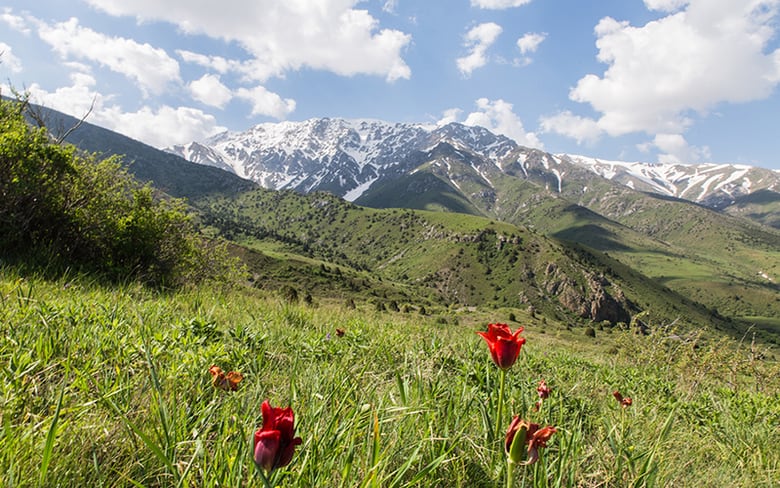
Aksu-Zhabagly Reserve is located in South Kazakhstan, covering part of the Talasskyi Alatau ridge in Western Tian-Shan. Starting from 1,100 metres at Zhabagly village the reserve stretches to 4200 metres at Sairamskyi Peak as the steppe disappears and the mountains begin.
The reserve is noted for its splendid flora, with over 1200 species including many tulips. More than 51 species of mammals inhabit the region, including the notoriously shy snow leopard, Tian-shan white-clawed bear, lynx, mountain goat and hundreds of furry marmots. A hot-spot for birdwatchers, keep your binoculars at easy reach for eagles, storks, cranes and bee eaters.
Discovering the foothills by horseback is a favourite activity for many visitors and we recommend as a highlight of Kazakhstan things to do. One or two-day rides, through immersive ten-day treks are available on tame and well-trained horses, all possible without prior riding experience.
Knowledgeable guides lead you to the grandiose 500-metre-deep canyon Aksu and assist as you make an ascent of mountain passes at more than 3000 metres. Visit a stalactite cave at the peak of Kaskabulak, famed for its ancient petroglyphs of wild animals and horsemen etched into the rockface.
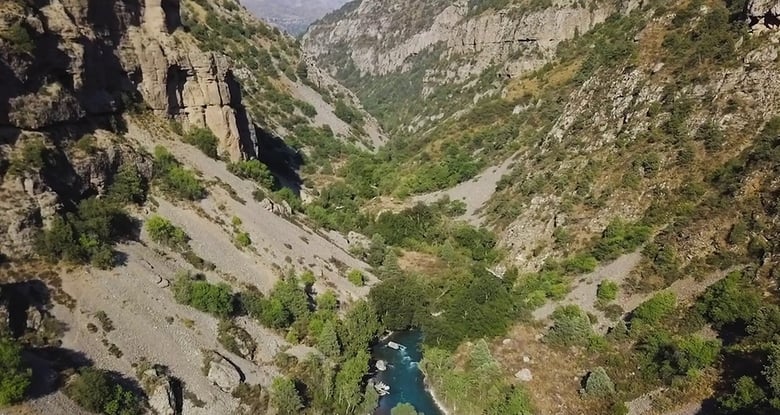
See glaciers, mountain lakes and waterfalls as you ride through alpine forests and learn myths and legends of the region. Overnight in established summer camps or set up tents in high meadows filled with summer wildflowers.
Enjoy meeting locals as you stop off at local villages along the route, or learn the ways of nomadic herders in the pastures as you relax after a day’s ride.
From Almaty or Nur-Sultan take a train to any city near to Shymkent. From there it’s approximately 30 minutes by road to Aksu Zhabagly. It’s best to organise a pick-up by your guest house as there are almost no taxis in the Shymkent region.
Overnight buses run between Almaty City (Sairan Bus Station) and Shymkent City, approximately a 12-hour journey. Alternatively, self drive taking approximately a whole day from Almaty Airport to Aksu Zhabagly.
Within the national park you will need to be accompanied by a ranger or guide (rarely English-speaking). Jeep safaris to the Aksu Canyon are available and if within your budget we thoroughly recommend.
If staying in the area, a number of homestays and guesthouses are available in Zhabagly. Note there are currently no restaurants in the village, and guests eat at their guest houses dining on classic central Asian dishes such as plov. Visit between July and September for ideal conditions.
9. Watch A Space Launch At Baikonur Cosmodrome
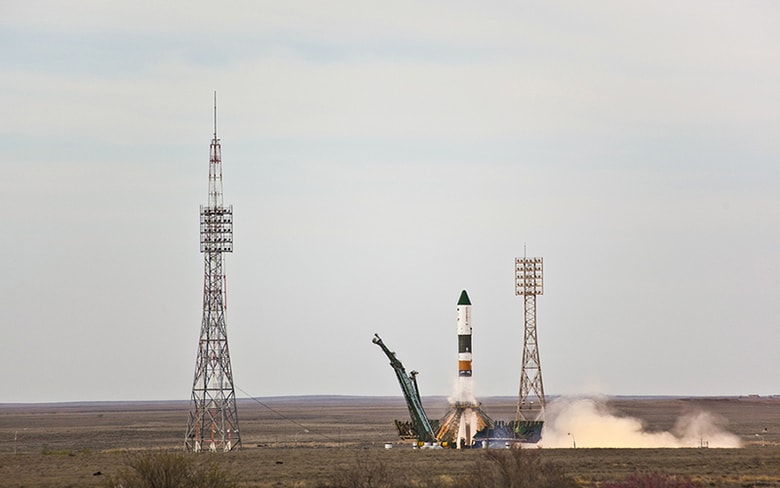
There aren’t too many internationally known Kazakhstan famous places, but the stand out is definitely the Baikonur Cosmodrome launch site complex. You’ll discover where Sputnik 1 – Earth’s first artificial satellite – and Yuri Gagarin – the first human in orbit – launched from. Since then, all Russian-crewed missions have been launched from Baikonur – including those to the Space Station – along with lunar, planetary and ocean surveillance missions.
In an era when the Soviets wanted to hide the location, the complex was purposefully named after a small mining town that sits over 322 km away. Actually based at Tyuratam in Kazakhstan, the launch complex is still referred to as Baikonur.
A remote area, this semi-arid zone, is approx. 2100 kms southeast of Moscow. The complex includes an airport, the town of Leninsk, an oxygen and nitrogen plant, various international and Russian military launch pads, and a military airfield.
In recent times international crews blast off to space only twice a year from Baikonur, with the dates being determined by the State Commission at meetings held approximately one month prior to launch.
Baikonur Cosmodrone Space Launch Tour Programmes are available here.
Arrive at Kyzylorda Airport, where you’ll be met by a representative and transferred to Baikonur. Accommodation and transfers are included in the packages, along with hangar and launch pad experiences. Guests have the opportunity to learn about the history of the complex and previous missions at the onsite Museum. VIP packages for small groups are also available.
Don’t miss this chance to watch the next space mission as the roaring engines light up the sky! A highlight of places to see in Kazakhstan.
Fly in to Kyzylorda Airport, with direct flights from Moscow, Almaty and Nur-Sultan.
10. Experience The Infamous Aral Sea
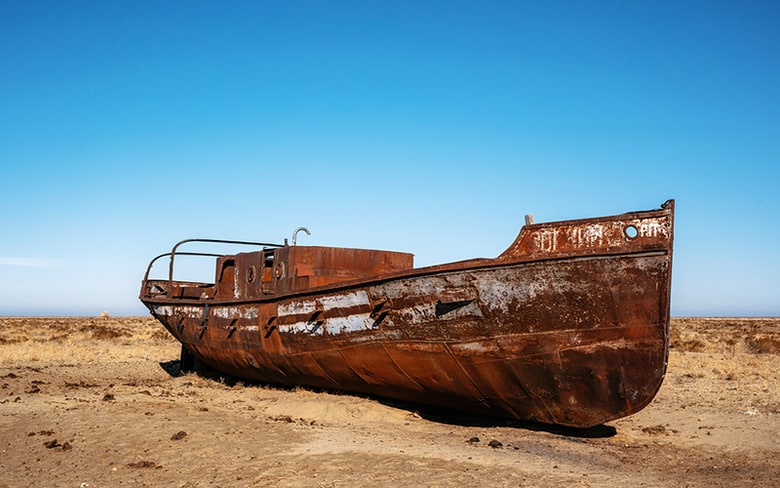
Once the world’s fourth largest freshwater lake, covering an area of some 67,000 sq km, the Aral sea became the victim of the Soviet Union’s agricultural policies in the 1950’s. Water from two rivers was intentionally diverted for cotton cultivation, causing a decrease in water flow into the sea. A rise in salinity caused many freshwater fish species to die out. By the 1980’s the fishing industry in Aralsk, Kazakhstan was destroyed and a mass migration of people moved away from the area.
Nature took its revenge, with the dried-out Aral seabed causing extreme weather and bringing increasingly bad health to the remaining population. Marked as one of the world’s worst ecological disasters, the sea today is only a tenth of what it was. Broken into two bodies – the North and South Aral Seas – the Uzbekistan South is completely desiccated, with only a small strip of water remaining. However, Kazakhstan’s North Aral Sea has had a happier outcome.
An $86 million dollar project, almost entirely financed by the World Bank, has helped restore the area. Repairs to existing dikes around the basin and an eight-mile dam have helped to increase the water levels by over 11ft. Fish stocks have slightly returned, injecting new life into the local communities and commerce back to Aralsk.
Visit Aralsk and you may be surprised at this desolate, extremely remote place, with very little tourism infrastructure. Definitely an extreme travel destination!
The town itself is very poor, almost forgotten but remains the only realistic base for exploring Kazakhstan’s North Aral Sea area. Low, single-storey residential housing is spread out along a grid of dusty streets. You’ll randomly find camels, cows and donkeys strolling in the roads, along with lots of young children. A town bazaar and a few bars are dotted around but there is little to keep you amused.
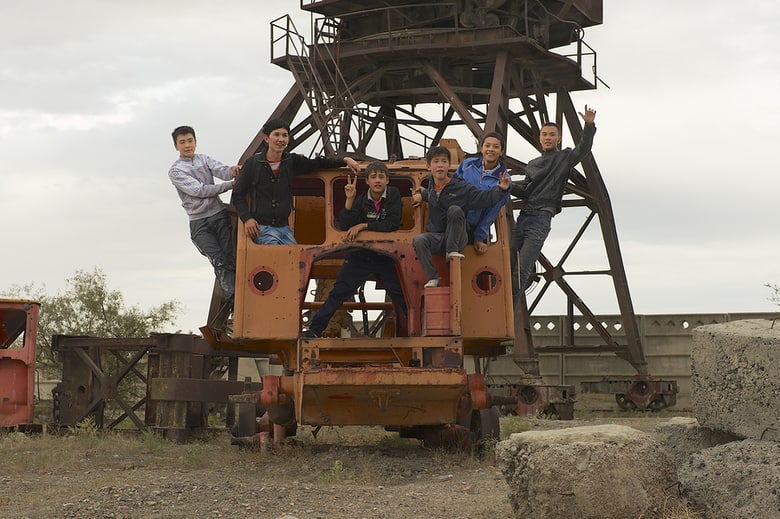
Do check out the Soviet-era propaganda remnant, celebrating the glory days of Aralsk. A mosaic inside the train station building depicts how the local fishing industry answered Lenin’s cry for help and supplied trainloads of extra catch to the hungry population in the Soviet Union after the revolution.
An old museum covers the town’s better days, with photos and charts showing the full extent of the shrinkage of the Aral Sea. Unfortunately all labels are in Russian, thus it’s difficult to follow some of the exhibits.
The rest of the town is made up of a few Russian monuments, the wide-open plaza of Central Square and the rusting cranes of the former freight train station and an abundance of abandoned industrial buildings.
Aralsk’s salt flats and its former harbour are usually the main reason for tourists to visit. Remnants of rusting ships litter the edges, some having almost rusted completely away with only the engine block still showing out of the remaining shallow waters. A few stranded fishing boats have been turned into a memorial.
Previously tourists would head out of Aralsk to the iconic ship cemetery at Zhalanash, but the last few rusting stranded fishing trawlers have been dismantled, and only the scorching desert and camels fill the void.
Aralsk can be reached by train but is very remote at over 1000 km from Nur-Sultan and 1400 km from Almaty. Alternatively fly into Kyzylorda and travel on by bus.
This “dark tourism” destination has only a handful of small hotels, with our recommendation to stay at Gostinitsa “Keruyen Sarayy”.
11. Explore The Desert, Canyons And Ancient Necropolises In Mangistau
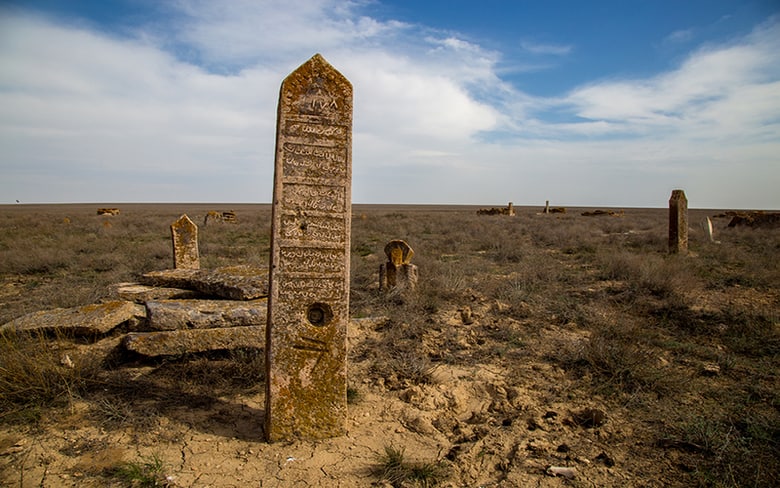
Stretching 400km east from Aktau to the Uzbekistan border, the stony deserts of the Mangistau region are a magical labyrinth of dramatic canyons, eroded and multicoloured rocky outcrops, underground mosques and ancient necropolises.
Kazakhstan historical places such as Mangistau are only today being explored by archaeologists, hindered by the inhospitable wilderness. Once a minor part of the Silk Road, the region is littered with centuries-old sacred sites. Discover plateaus, lowlands, mountains and deserts, coloured in shades of green, yellow and red.
Join an organised multi-day tour or rent a 4WD with a knowledgeable driver, and head off across the desertscapes – home to only a few camels or sheep – to discover this western part of Kazakhstan, on the shore of the Caspian sea.

A billion years ago the region was at the bottom of the Tethys Ocean and the land is still littered with ancient shells. Over 11 thousand historical monuments have been recorded on this desolate hinterland, stunningly surrounded by white limestone escarpments and isolated mountains that rise up from the plains.
Shakpak Ata is the most architecturally impressive of the underground mosques, dated between the 10th and 13th centuries. The plan of the mosque, strikingly, takes the form of a cross. A central square is covered by a domed ceiling with a hole in the top for light and ventilation. Check out the etchings of horses, goats and handprints in the walls of the mosque and learn the legends of the Sufi followers that hid in the cave to practice healing magic.
Nearby is one of the noted historical places of Kazakhstan, the Beket Ata underground mosque, honouring one of the greatest religious teachers, scientists and philosophers in the history of Central Asia.
Other sites we recommend visiting include The Seisem Ata necropolis – a cluster of ancient mausoleums made from pink limestone – Mangyshlak Peninsula, and the awesome Ustyurt Plateau – a clay and stony desert with rocky sand cliffs that rise more than 300 metres across the plateau.
Fly into Aktau Airport, with flights from Moscow, Almaty, Nur-Sultan and Atyrau.
We recommend staying at Caspian Riviera Grand Palace Hotel.
Map Of The Best Places To Visit In Kazakhstan
To help you plan your trip to Kazakhstan, find all the top 11 Kazakhstan best places to visit on the map below.
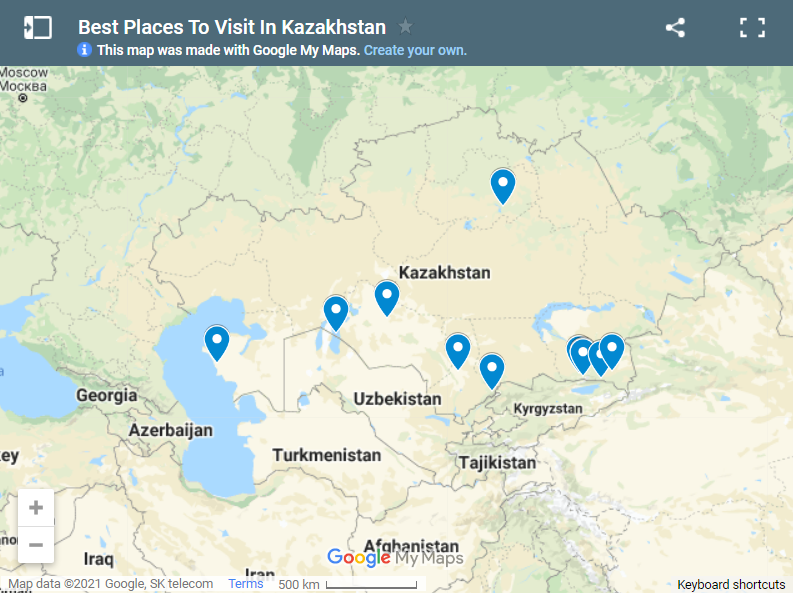
We hope you enjoyed this list of the top 11 tourist attractions in Kazakhstan and it’s answered your questions about what are the most popular places tourists visit in Kazakhstan. Looking for more inspiration and help with planning your trip to Kazakhstan? Find all our guides here.
